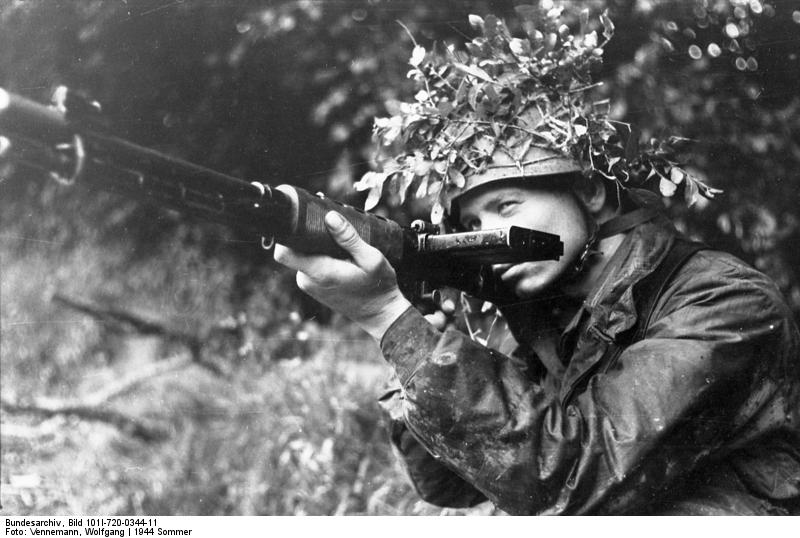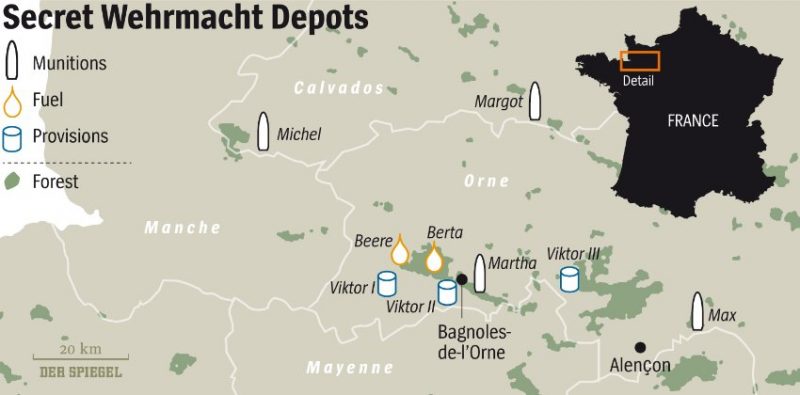Bagnoles de l’Orne is a spa-town in Normandy, and there are many attractions here that are recommended, one of them being the Belle Epoque Quarter with its famous hot springs. There’s also a natural reserve near the village, a region that is forested and looks like it belongs in a fairy tale story.
People visiting the forest are largely unaware of the dark history that has unfolded here. Nothing gives away that at one time German munitions and fuel depots littered this forest. Back in 1943 hundreds of bunkers were dug into the forest floor (Foret des Andaines) by the Nazis. These were used to hide masses of provisions, munitions, and fuel.
The Germans believed these depots would be needed in the battle that was coming against the Allies. They ensured these bunkers were very well hidden. It was known by the Americans and British that such places existed in this region but airstrikes proved ineffective due to them being hidden so well. David Passmore (who is a physical Geography Professor) wrote in the International Journal of Historical Archeology ‘Postwar survival of features has been remarkably good in this forested setting… This likely constitutes one of the best preserved and most extensive examples of a non-hardened World War 2 archeological landscape yet documented in Western Europe’.
Passmore, along with his team, has carried out the very first focused study of this region. The extent of these bunkers was very much unknown. This is because the construction was carried out in great secrecy. There are no maps that have been found, to date. The only way Passmore could reconstruct this network was to use excerpts from diary entries which the Wehrmacht’s 7th Army Commander made. Passmore also utilized sketches made by Allied pilots shot down in this region and who were lucky enough to escape. Put together these two things provide an image of a military complex that was very well-equipped and even held a POW camp.
Germany’s Wehrmacht established an intricate network of supply depots in the forests of Normandy.
The structure was made up of individual camps; these had names like Viktor, Martha, Berta, Michel and Margot, and foxholes were present throughout for use by snipers. However, this complex was not enough to win the War, following the Normandy landing by the Allies, the Germans were chased from France within a period of three months.
Following the War, historians paid attention to the concrete fortifications that had been built by the Wehrmacht along the coast of the Atlantic. Weapon caches, such as those in the forest in Normandy, were left alone. This is somewhat surprising as Passmore suspects these bunkers were used for more than storage and that this was possibly the logistics headquarters for the 7th Army’s presence in Normandy.
It has been 70 years since the War ended and still this area is used for archaeological study and many bunkers are still visible. You can also see untouched craters, left behind by American bombing attacks. The random placement of these craters leads researchers to think the Allies didn’t know for sure where in the forest the valuable targets were. A fact was proven when the largest munitions bunker here remains untouched.
The stashes benefitted someone, however, the local population looted the stores after the Germans had left, and found up to 4,200 tons of foodstuff. The Germans had left in a hurry and simply could not take it with them.

